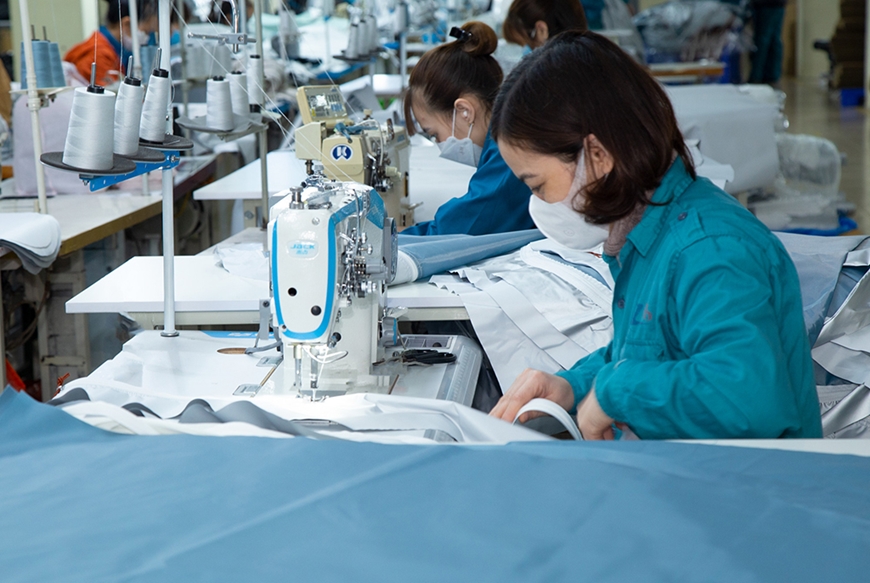(VietQ.vn) - The sustainable trend is becoming a global trend, each country has different policies on environmental protection, using different textile and garment products, but they are all aiming for safety and energy saving. save water, limit chemicals, affect the environment.
Data from the General Department of Customs shows that in the first quarter of 2022, the export value of textiles and garments reached USD 8.68 billion, up 20.3% over the same period last year, corresponding to an increase of 1.46 billion USD. USD. This is the highest increase in the past 10 years, from 2012 to present. The growth of the textile and garment group was at a record level in March 2022, reaching 3.05 billion USD, up 48.3%, equivalent to an increase of more than 1 billion USD compared to the previous month.
This is considered a positive signal for businesses to expand investment and promote production. According to experts' forecasts, global consumer demand is on the rise, the value of Vietnam's textile and garment export turnover is likely to reach about $48 billion by the end of the year, an increase of nearly $6 billion. compared with the target.

Sustainable development is an inevitable trend of the textile industry. Illustration.
Currently, most businesses have orders until September, even many businesses have orders until the end of the year. Specifically, Mr. Than Duc Viet, General Director of Garment 10 Corporation, said that the number of orders of the unit is relatively abundant, ensuring stable jobs for employees. In addition to orders to meet the season, now traditional items such as vestons and shirts have increased again and there are signed orders until the end of the year.
According to Ms. Pham Thi Phuong, General Director of Hung Yen Garment Corporation (Hugaco), in 2022, Hugoco strives to achieve a revenue of about 750 billion VND; pre-tax profit reached 80 billion dong; average monthly income is more than 10 million VND/person. However, due to the unpredictable movements of the market, especially the complicated geopolitical situation of countries around the world, the source of goods in the last months of the year is forecasted to be not as abundant as in previous years. To achieve the set goals, enterprises need to continue to invest, expand production, innovate equipment and technology to promote export of goods.
However, in order to make good use of export opportunities, Vietnamese textile and garment enterprises must be self-sufficient in the supply of raw materials, meeting the requirements of new-generation trade agreements (FTAs). Recently, the European Commission (EC) has proposed to apply a number of new ecological regulations for textiles and garments consumed in this market, in which, Vietnamese textiles and garments entering the European market must be long life, reusable and repairable.
Not only in Europe, the sustainable trend is becoming a global trend, each country has different policies on environmental protection, uses different textile products, but all aim for safety, saving energy, save water, limit chemicals, affect the environment.
Therefore, the Vietnamese textile and garment industry must change in time to meet the new ecological regulations for textiles and garments consumed in difficult markets, and at the same time, enterprises themselves must invest in standard infrastructure. ink according to the requirements of the brand, in order to meet the requirements of product quality and expand the market.
Thanh Tung
https://vietq.vn/xu-huong-phat-trien-ben-vung-trong-nganh-det-may-d199975.html
vietq